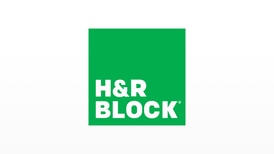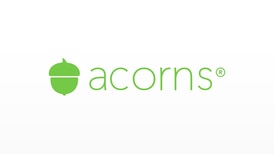
Overall Ranking
4.5/5
Overview
4.75/5
4.9/5
4.75/5
4/5
4/5
Want to test drive a new investment platform for free? You can choose to have full control over your portfolio, or have your portfolio managed for you. We’ll show you how in our SigFig Review.
Editor's Note
You can trust the integrity of our balanced, independent financial advice. We may, however, receive compensation from the issuers of some products mentioned in this article. Opinions are the author's alone. This content has not been provided by, reviewed, approved or endorsed by any advertiser, unless otherwise noted below.
SigFig is a robo-advisor, but not in the traditional sense–if the word “traditional” can in any way be associated with robo-advisors, given how recent the whole concept is. SigFig doesn’t take direct custody of your funds. Instead, they either provide investment advice or automated management with your account held at major brokerage firms.
They offer a free version with limited services, and a managed portfolio as a full robo-advisor. Like other robo-advisors, SigFig uses Modern Portfolio Theory to manage your portfolio.
According to SigFig, 800,000 users manage $350 billion on the platform.
How SigFig Works
If you decide to work with SigFig, you’ll choose between the free or the fully managed investment options:
The Free Portfolio Tracker
This provides analysis and recommendations, without active management. You may take advantage of the service, free of charge, and continue to manage your own portfolio.
The Managed Portfolio
This is the full version, with all the management services typically associated with robo-advisors.
(NOTE: One of the primary features of SigFig in the past has been their Diversified Income Portfolio, designed to provide income, rather than growth. It targeted retirees with larger portfolios, as well as an annual return of about 4%. The option has disappeared from their website, and is apparently no longer available.)
Let’s take a look at both versions more closely.
The Free Portfolio Tracker
This service is free to use, and as such provides only “high altitude” investment advice. Self-directed investors get an outside opinion–and view–of their portfolio from an objective third-party. This version comes with the following services:
Investment Account Sync
This tool enables you to see all your various investment accounts in one place, so you can get a more holistic view of your investment picture.
Portfolio Tracker
This tool tracks the performance of all your investment accounts.
Reporting Dashboards
Provides reports on your investments, including performance over time, fee breakdown, holdings summary, and other key statistics.
External Portfolio Analysis
This service analyzes your external investment accounts, and provides recommendations based on diversification and fees.
Live Chat and Phone Support
This service is very unusual. You can take advantage of customer contact even though you aren’t paying a fee for the service. The website claims support is available 24 hours a day, seven days per week, 365 days per year, by email, live chat or phone. However, when I contacted customer service by phone and email on a weekend, I got a message saying they were not available until Monday morning.
SigFig Managed Portfolio
This version provides full portfolio management. The minimum initial investment is $2,000. Users choose one of the following three investment brokerages to hold their accounts:
- Fidelity
- TD Ameritrade Institutional
- Charles Schwab
SigFig has partnered with these brokerages, and believes they can provide better protection and security.
Managed Portfolio features include all the features available under the Free Portfolio Tracker, plus the following:
Investment Advisor
This is a free consultation from the advisory team to discuss your investment strategy.
Personalized Portfolio Allocation
You’ll receive a personalized portfolio designed specifically for you, based on your own goals and risk tolerance.
Cash Optimization
SigFig consistently reinvests your cash to keep earning income. It reduces the opposite effect (losing money), known as “cash drag.”
Automated Rebalancing
Your portfolio allocations are automatically adjusted based on your original target allocations. This ensures your portfolio will stay on track, regardless of market fluctuations.
Automated Reinvesting
SigFig automatically reinvests dividends.
Tax-Optimized Sales
To maintain your target portfolio allocation, SigFig may sell some investments and then use tax-efficient strategies to minimize your tax liability.
Tax Loss Harvesting
This is an optional feature, that applies only to taxable accounts. With this strategy, certain positions are sold at a loss, to reduce the gains on winning positions. Parallel investments are later purchased, to maintain the target portfolio allocation.
Tax-Efficient Migration
Basically, investments that earn interest and dividends are held primarily in tax-sheltered investments. Those that generate capital gains are favored in taxable accounts, due to lower capital gains tax rates.
Whitelisting
When SigFig assumes management for your portfolio, they will retain any investments you hold that are close to the portfolio allocations they recommend. This will minimize capital gains taxes.
Managed Portfolio Fees
The first $10,000 is managed free. After that, the annual fee is 0.25% of your account balance in excess of $10,000. SigFig does disclose that there are expense ratios of between 0.07% and 0.15% as part of the low-cost exchange-traded funds (ETFs) that are used to make up your portfolio.
Accounts Available
These include individual and joint taxable accounts, and various types of IRAs. They don’t manage 401(k) plans, but they do accept rollovers into IRAs.
Investment Funds Used
SigFig uses low-cost ETFs in building portfolios with funds drawn primarily from Vanguard, iShares and Schwab. The specific ETFs used depend on which brokerage platform your account is held with, Fidelity, TD Ameritrade or Charles Schwab. The funds are invested in a mix of US and foreign stocks, US and foreign bonds, and real estate.
The specific funds used to build your portfolio are as follows (alternative ETFs are in parentheses):
| Fidelity | TD Ameritrade | Charles Schwab | |
|---|---|---|---|
| Treasury Inflation Protected Security | TIP (N/A) | IPE (N/A) | SCHP (TIP) |
| US Bonds | AGG (SCHZ) | SPAB (SCHZ) | SCHZ (AGG) |
| Short-Term Treasuries | SHY (SCHO) | SPTS (SCHO) | SCHO (SHY) |
| Emerging Markets Debt | EMB (PCY) | EMB (PCY) | PCY (EMB) |
| Municipal Bonds | MUB (TFI) | MUB (TFI) | TFI (MUB) |
| US Equities | ITOT (IWB) | SPTM (IWB) | SCHB (SCHX) |
| Developed International Equities | IEFA (VEA) | SPDW (IEFA) | SCHF (IEFA) |
| Emerging Markets EquitiesReal Estate | IEMG (VWO) | SPEM (IEMG) | SCHE (IEMG) |
| Real Estate | FREL (IYR) | USRT (IYR) | SCHH (VNQ) |
Account Security
All SigFig Managed Portfolios have coverage through the Securities Investor Protection Corporation (SIPC). That protects your investment for up to $500,000 in cash and securities, including up to $250,000 in cash. SIPC protects investors from broker failure, and not from losses due to market factors.
Signing Up For SigFig
Complete a single-page questionnaire online that asks about your age, your investment time horizon (short, intermediate or long-term), your household income, the percentage of income you save, your liquid assets, and your risk tolerance.

If you’re not sure where you stand on your risk tolerance, the questionnaire gives you five choices:
- Very Low – Any loss would be intolerable.
- Low – You would tolerate losing up to 10% of your value in a downturn.
- Medium – You would tolerate losing up to 25% of your value in a downturn.
- High – You would tolerate losing up to 50% of your value in a downturn.
- Very High – You would tolerate losing more than 50% of your value in a downturn.
- Not Sure? – You’ll need to complete another brief questionnaire to determine your risk tolerance.
Once you complete the questionnaire, you click on “Build My Investment Plan.”
Portfolio Recommendations
We chose a 35-year-old with a moderate risk tolerance for our example below. This person has a $100,000 income, $25,000 in liquid assets and is willing to commit between 10% and 20% of income to investments.

Changing your risk tolerance and other details will produce a different portfolio mix.
Here’s what I came up with using the same financial profile, but with different risk tolerances:
- Very Low – 62% stocks, 38% bonds
- Low – 72% stocks, 20% bonds
- Moderate – 87% stocks, 13% bonds (the allocation shown in the screenshot above)
- High – 90% stocks, 10% bonds
- Very High – 90% stocks, 10% bonds
For comparison sake, I changed the age to 55, and the investment time horizon to intermediate (five to 10 years). Here’s the result:
- Very Low – 50% stocks, 50% bonds
- Low – 56% stocks, 44% bonds
- Moderate – 64% stocks, 36% bonds
- High – 67% stocks, 33% bonds
- Very High – 67% stocks, 33% bonds
SigFig Pros and Cons
The SigFig management fee of 0.25% is well below the 1.00% or more typically charged by traditional investment managers.
The first $10,000 is managed for free. This is perfect for new and small investors.
The management fee is also comparable to other popular robo-advisors, like Betterment and Wealthfront.
The free version is useful for investment advice.
The $2,000 initial investment is accommodating of both new and small investors.
You’re limited to holding your account with Fidelity, Charles Schwab, or TD Ameritrade. You'll have to transition if you don’t already invest in those platforms.
The Portfolio Tracker service is free but very limited.
Based on actual experience, customer service is not available seven days per week, as the website advertises.
Should You Open an Account with SigFig?
SigFig is certainly worth trying out if you already have an account with either TD Ameritrade, Charles Schwab or Fidelity. At least, it’s worth trying if you’re not into self-directed investing (or you’ve given up on it), and you want to make a change. You’ll be able to go with a robo-advisor service, without having to move your account.
SigFig also looks to be an excellent package for new and small investors. The minimum initial investment is just $2,000. Plus, SigFig manages the first $10,000 for free. That will give you an opportunity to “test drive” the service, without any cost.
But perhaps the area where SigFig shines best is in the tax management of your investing activities. Not only do they provide tax-loss harvesting, but they also offer tax optimized sales, tax-efficient migration, and whitelisting. All four investment strategies are designed to minimize your capital gains, and therefore your capital gains taxes. The tax-efficient migration strategy also minimizes taxes on income-generating assets, by holding them in tax-sheltered plans.
It’s hard to say if SigFig is one of the better robo-advisor services available. But what is clear is that they do certain things very well, especially for new and small investors, and in the area of tax management. For these reasons, we’re giving SigFig a solid thumbs-up!
To sign up for the service, visit the SigFig website.




